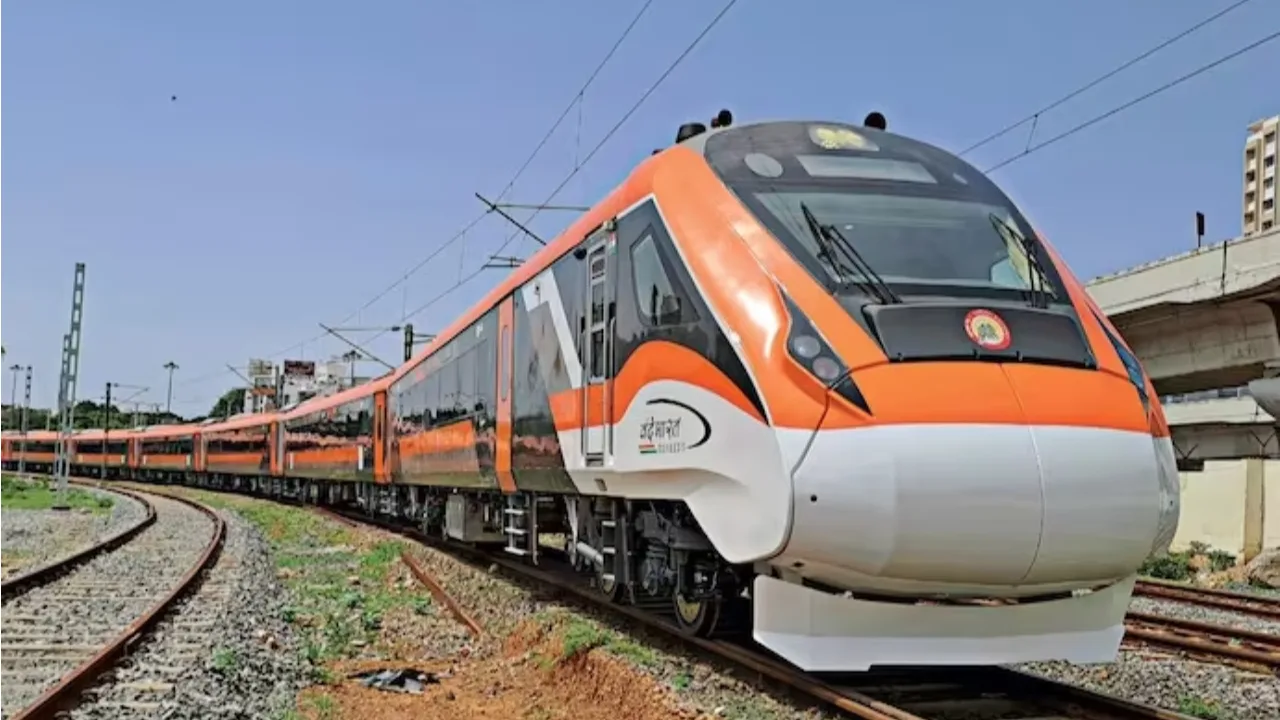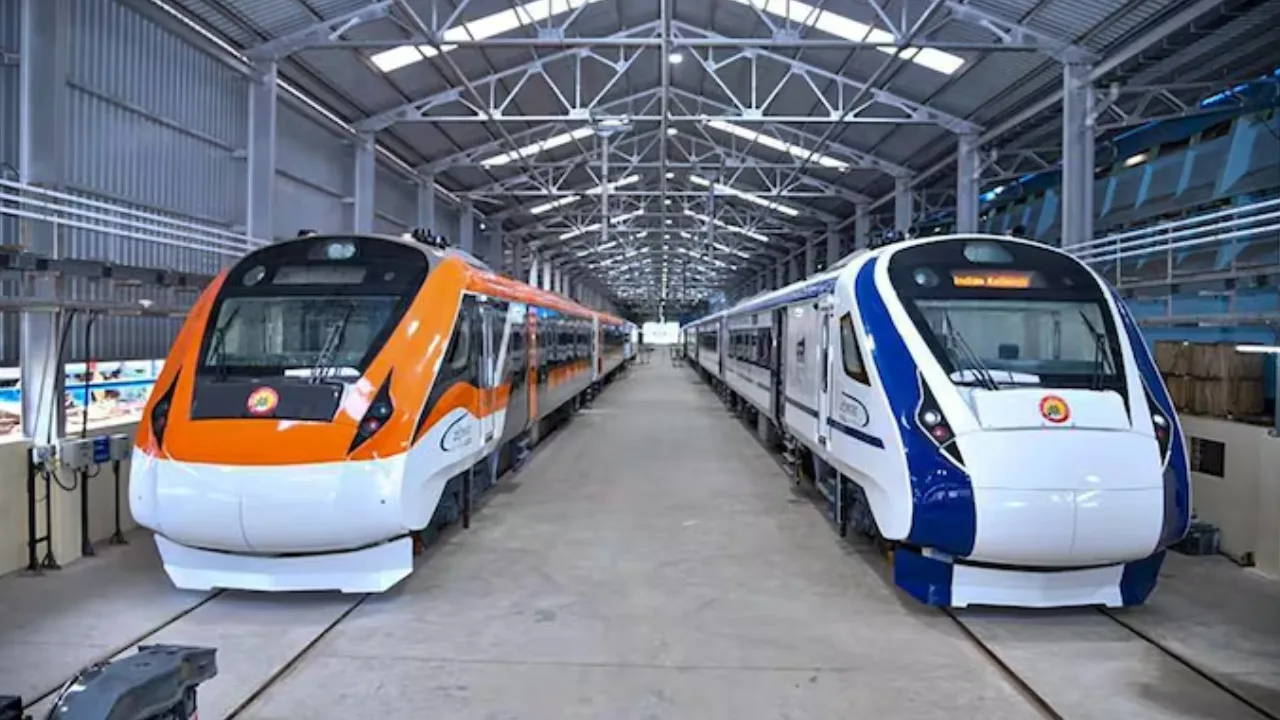Vande Bharat train: Continuous efforts are being made to strengthen the rail network across the country, so that the journey of the passengers can be completed easily and in less time. In this episode.
pictures of the country’s first sleeper Vande Bharat Express train equipped with modern facilities have surfaced.which was unveiled in Bengaluru. In the static trial of this train, which will run for 10 days, the software of the train etc. will be tested.
First train will run on Mumbai-Delhi route
On August 9, the trial of 20 coach Vande Bharat Express (seating) between Mumbai and Ahmedabad by Research Design and Standards Organization (RDSO) has been successful at a speed of 130 kmph. Apart from this.

the work of the project to run the train between Mumbai-Delhi at a speed of 160 kmph has been completed. All these signs are confirming that the country’s first Vande Bharat Express Sleeper can be run on Mumbai to Delhi route.
4 hours of time will be saved
On the occasion of the unveiling of the Vande Bharat Sleeper Express train, Union Railway Minister Ashwini Vaishnav said that this train will be an alternative to trains like Rajdhani Express.
Currently, Rajdhani Express completes the journey between Delhi and Mumbai in 16 hours, but Vande Bharat will cover this distance in 12 hours. That is, 4 hours of time will be saved.
Mission Raftar will be started
The Union Railway Minister said that five years ago, the ‘Mission Raftar’ project was started to run trains between Mumbai and Delhi at a speed of 160 kmph. The work related to this project of 1478 km long route and Rs 8 thousand crore has been completed.
He said that a successful trial has been done from Mumbai to Ahmedabad at a speed of 130 kmph. After this, trials will be conducted in several phases and in different sections at a speed of 160 kmph.
He said that to run the train at high speed, fencing is necessary on both ends of the tracks on the entire route. About 50% of the entire route i.e. 792 km is under the jurisdiction of Western Railway and the work of cattle fencing and wall fencing has almost been completed in this entire section.
Along with increasing the speed of trains, Indian Railways’ ‘Kavach’ technology is being used on the entire route for their safety. It is impossible for trains fitted with Kavach to collide head-on, because automatic brakes will be applied in the train before the collision.
These changes have been made to increase the speed
At present, the average speed of trains in the country is 70-80 km per hour, but the Railways wants to increase it to 160 km per hour. To increase the speed of trains.
the Railways has widened the base under the tracks, so that there is stability in the speed as well. 2 x 25000-volt (two separate power lines of 25 thousand volts) power lines have been built on its entire route.
Under this project, 134 curves have been straightened in the Western Railway area. At the same time, 60 kg 90 UTS rail is required for a speed of 160 km per hour, whereas at most places in Indian Railways, 52 kg 90 UTS tracks are installed.
According to the project, the work of changing the tracks on Mumbai-Delhi route is almost complete. To increase the speed of trains, the cushion of stone pebbles under the tracks has been increased from 250 mm to 300 mm.
